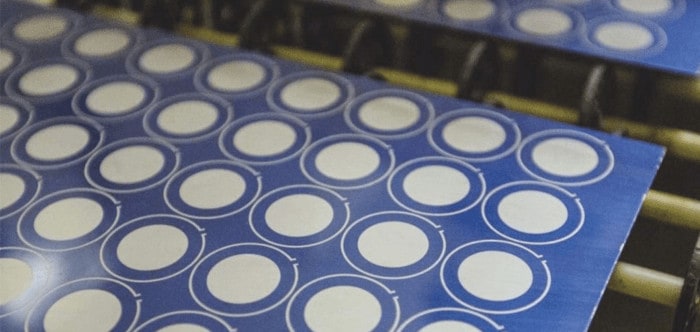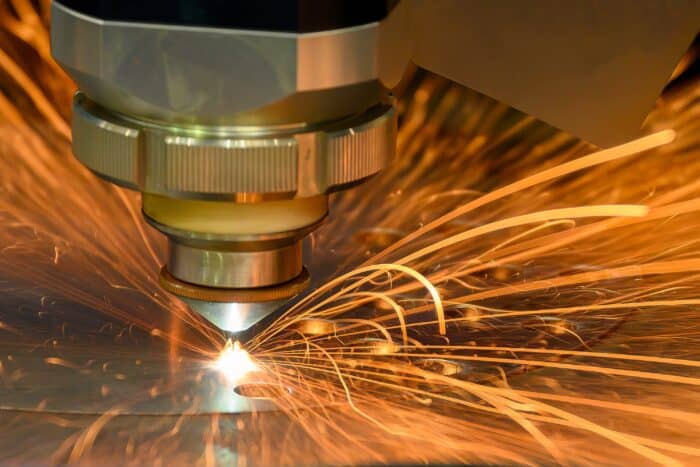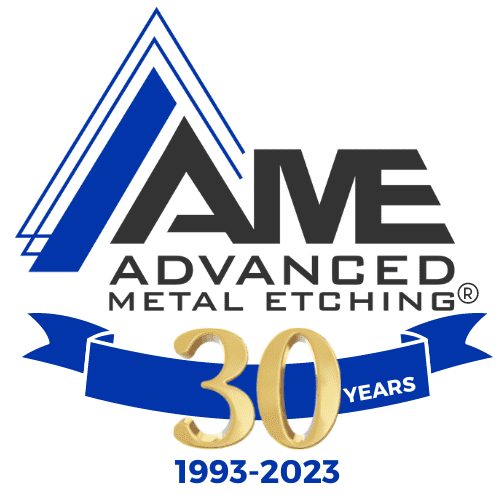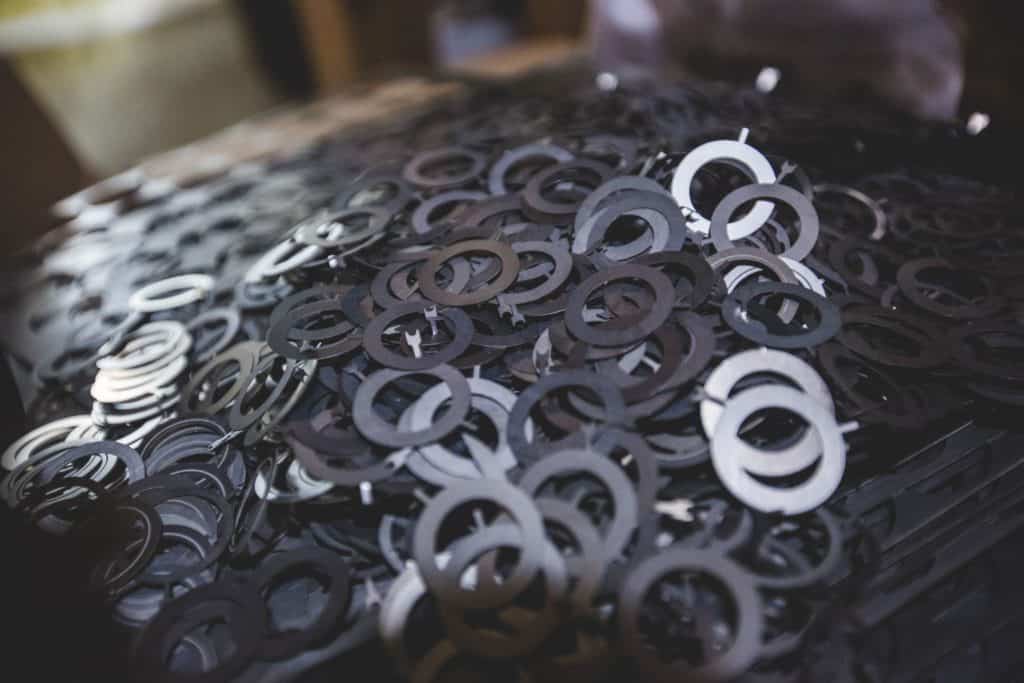
Chemical Etching is a subtractive manufacturing technique that uses a chemical solution to selectively etch away unwanted material from the surface of the metal sheet.
A photoresist is applied to the metal sheet, and the design or pattern is exposed to the metal through a photolithographic process. The exposed metal areas are then selectively etched, leaving behind the desired shape or pattern of the shim.
One of the significant benefits of photo chemical etching is that it can produce shims with high precision tolerances of up to +/- 0.01mm. This level of precision enables manufacturers to create customized shims for specific applications. Moreover, since the etching process does not require tooling dies or expensive equipment, the lead time and cost for prototyping and production are considerably low.
Manufacturing Shims
Several metal applications require shims with exceptionally smooth surface finishes that photo etching provides. Here are some examples:
Optical instruments: Precision optical components like mirrors, lenses, and prisms need shims with near-perfect surface finishes to minimize light scattering and ensure optimal performance. These shims are often made of highly polished stainless steel, aluminum, or even gold.
Medical devices: Surgical instruments, implants, and other medical devices often require shims with extremely smooth surfaces to minimize tissue irritation and ensure proper functionality. These types of shims are usually made of the following metals:
Titanium is an excellent material option for implants, surgical instruments, and other essential components because it offers superior strength, corrosion resistance, and biocompatibility.
On the other hand, Nitinol is a nickel-titanium alloy that can deform under stress but return to its original shape because of its super elasticity. This makes it perfect for shims in dynamic applications like stents or joint replacements.
Stainless steel is a cost-effective option that has good strength and corrosion resistance. It can be used for less demanding applications. Titanium is an excellent material option for implants, surgical instruments, and other important components because it offers superior strength, corrosion resistance, and biocompatibility.
Semiconductor packaging: High-performance electronic components need precise shims to ensure proper thermal management and electrical contact. These shims are often made of copper, aluminum, or other highly conductive materials with smooth surfaces to minimize thermal resistance and electrical impedance.
Aerospace and defense applications: Critical components in aircraft, spacecraft, and military equipment often require shims with exceptional surface finishes to ensure high performance and reliability. These shims are typically made of high-strength materials like titanium, inconel, or beryllium, with surfaces polished to near-mirror quality.
Laser Cutting Shims

Laser cutting, also a subtractive manufacturing process, cuts sheet metal to the shape of the shim using a laser beam. A CAD file or vector image is imported into the laser cutting machine, which directs the laser beam onto the metal sheet.
One of the advantages of fiber laser cutting is that it can cut through various materials, such as stainless steel and aluminum, with high precision and speed.
The laser cutting process can produce shims with tolerances of up to +/- 0.05mm. If a higher level of precision is required, laser cutting can be combined with other techniques, such as metal photo etching, to achieve the desired level of accuracy.
Another benefit of laser cutting is that it eliminates the need for complex tooling setups, which makes it ideal for small production runs or prototyping.
When to Use Chemical Etching or Laser Cutting for Shims
The decision to use chemical etching or laser cutting depends on various factors, such as the shim's thickness, the design's complexity, and the industry's application.
For example, metal etching is preferred for manufacturing shims with high precision tolerances, as it can produce complex designs with micro features without compromising accuracy.
Example:
Tiny shims:
- Function: Filling microscopic gaps for precise alignment and spacing between delicate components, like tiny integrated circuits (ICs) or sensors.
- Size: Often measured in fractions of millimeters, thinner than a human hair!
- Thickness: Usually very thin, ranging from a few micrometers to tens of micrometers.
In contrast, laser cutting is preferred for cutting thicker materials, where chemical etching may not be suitable due to its depth limitations.
Example:
Large shims:
- Function: Supports heavy modules or adjusts alignment for bulky components like heat sinks or transformers.
- Size: Depending on the device size, it can be several centimeters or even tens of centimeters.
- Thickness: Often the thickest among electronic shims, ranging from millimeters to a few centimeters.
Laser cutting is a more economical choice for smaller production runs because it has a faster setup time. Chemical etching is best for moderate to larger runs with parts that have intricate features.
Conclusion
The choice of whether to choose chemical etching or laser cutting to manufacture shims depends on the thickness of the shim, design complexity, and industry application. Whether you use chemical etching or laser cutting it can result in considerable cost and time savings, making it a preferred manufacturing choice for aerospace, automotive, and electronics companies.
Manufacturers must consult with experts in the field to determine the most suitable manufacturing technique for their specific needs.
At Advanced Metal Etching, we offer both types of manufacturing methods. We have over 30 years of experience with all kinds of industry applications and shim production. We can advise which process is the most economical, fastest, and technically capable method for your part requirements.


